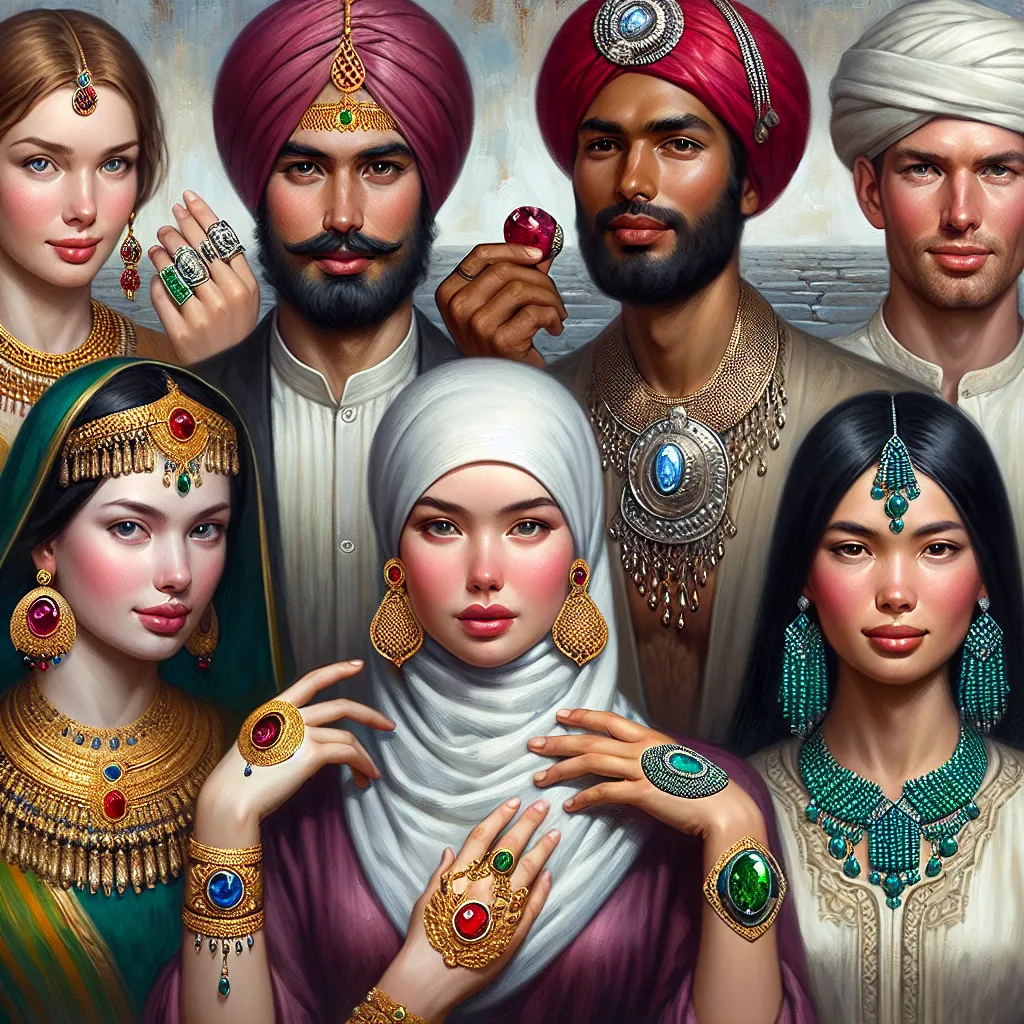The History of Ornamentation in Different Cultures
The history of ornamentation in different cultures is a fascinating topic that sheds light on the diversity and richness of human expression. Across the globe, ornaments have held cultural significance for millennia, serving as symbols of status, beliefs, and traditions.
In ancient Egypt, jewelry and ornaments were not only decorative but also had amuletic purposes, protecting the wearer from harm and evil forces. Similarly, in ancient Mesopotamia, jewelry served as a symbol of wealth and status, often expressing the wearer’s social standing and power. In contrast, the Maasai people of East Africa use vibrant beadwork as a form of cultural expression, with each color carrying its own symbolism and meaning within their society.
In Asia, the intricate designs of traditional Chinese ornaments often incorporate symbols of luck, prosperity, and happiness, reflecting the deep-rooted cultural values of the society. Meanwhile, the elaborate jewelry of India not only showcases the country’s exceptional craftsmanship but also holds religious and spiritual significance, with many ornaments being linked to Hindu deities and traditions.
Moving to the Americas, the ornaments of indigenous peoples such as the Aztecs, Mayans, and Incas were crafted with the utmost precision and were often made from precious metals and gemstones. These ornaments were imbued with spiritual and religious meanings, symbolizing connections to the natural world and the divine.
The history of ornamentation across different cultures is a testament to the enduring value placed on self-expression, cultural identity, and the preservation of traditions. From the intricate designs of ancient civilizations to the contemporary interpretations of traditional ornaments, the significance of these adornments continues to endure, serving as poignant reminders of our shared human history and the diversity of global cultures.
Symbolism and Meanings Behind Ornaments from Various Regions
When it comes to exploring the cultural significance of ornaments around the world, one cannot overlook the rich symbolism and meanings behind these adornments from various regions. Ornaments have held a profound significance in human societies, often serving as powerful symbols of identity, status, spirituality, and cultural heritage.
In many African societies, intricate beadwork holds deep cultural and symbolic meanings. For instance, among the Maasai people of East Africa, colorful beaded ornaments are not merely decorative. They convey social and cultural information, with specific colors and patterns reflecting age, social status, and even the mood of the wearer. Similarly, in South Asia, the tradition of adorning oneself with intricately designed gold jewelry goes beyond mere aesthetics. These ornaments are often imbued with symbolism related to marital status, prosperity, and familial bonds.
Moving to the indigenous cultures of the Americas, ornaments made from materials like feathers, shells, and animal bones carry spiritual significance. Among the Native American tribes, the intricate designs and materials used in crafting ornaments often symbolize connections to the natural world, ancestors, and traditional belief systems.
In East Asia, traditional ornaments such as jade pendants and intricate hairpins are steeped in symbolism. Jade, revered for its durability and beauty, is seen as a symbol of purity, longevity, and wisdom in Chinese culture, making jade ornaments highly prized and symbolic. Meanwhile, in Japan, the elaborate hair ornaments known as kanzashi hold deep cultural significance, with different designs and materials signifying specific occasions, such as weddings or coming-of-age ceremonies.
Exploring the symbolism and meanings behind ornaments from various regions provides a fascinating glimpse into the diverse cultural tapestry of our world. These adornments not only reflect the artistic prowess of their creators but also serve as tangible expressions of the values, beliefs, and traditions cherished by different societies.
Traditional Ornaments as Expressions of Cultural Identity
Traditional ornaments play a significant role in expressing the cultural identity of different societies around the world. These adornments, whether worn as jewelry, clothing embellishments, or decorative items, represent the unique traditions, values, and aesthetics of various cultures. From the intricate beadwork of the Maasai people in East Africa to the elaborate gold jewelry of Indian brides, ornaments serve as powerful symbols of heritage and identity.
For many indigenous communities, traditional ornaments are crafted using age-old techniques passed down through generations, incorporating materials that hold spiritual or symbolic significance. The intricate designs and patterns often convey stories of creation, mythology, or historical events, providing a direct link to the cultural narrative of the people. In this way, ornaments become living artifacts, preserving and perpetuating the rich heritage of a community.
Moreover, traditional ornaments are not merely decorative; they often carry deep social and ceremonial importance. In some cultures, specific ornaments are reserved for ceremonial occasions such as weddings, rites of passage, or religious celebrations, further underlining their role in defining cultural identity and traditions. The distinct styles and materials used in these ornaments also reveal regional variations and the influence of local landscapes, resources, and craftsmanship.
By delving into the cultural significance of traditional ornaments, we gain a deeper understanding of the diverse ways in which people express their identity and heritage. These adornments serve as tangible symbols of cultural pride, resilience, and creativity, reflecting the complexities and beauty of human civilization across the globe.
Evolution of Ornamental Traditions in Global Context
Exploring the cultural significance of ornaments around the world unveils a rich tapestry of traditions and artistic expressions that have evolved over centuries. The evolution of ornamental traditions in a global context reflects the deep-rooted connection between ornamentation and cultural identity. From ancient civilizations to modern societies, ornaments have played a pivotal role in conveying cultural heritage, social status, and personal expression.
One of the fascinating aspects of the evolution of ornamental traditions is the interplay between historical influences and contemporary interpretations. For example, in many Asian cultures, intricate patterns and motifs in jewelry and textile ornaments carry symbolic meanings that trace back to ancient folklore and religious beliefs. These traditions have endured the test of time, adapting to changing societal dynamics while retaining their cultural significance.
Similarly, the ornamental traditions of indigenous communities around the world offer profound insights into the intersection of cultural preservation and adaptation. The use of natural materials, such as feathers, shells, and stones, in indigenous ornaments symbolizes a harmonious relationship with the environment and embodies the community’s spiritual values.
Furthermore, the global exchange of ornamental styles and techniques has contributed to the cross-pollination of cultural influences, resulting in hybrid ornamental forms that showcase the dynamic nature of cultural evolution. For instance, the fusion of traditional African beadwork with contemporary fashion design illustrates how ornamental traditions can transcend geographical boundaries and inspire innovative artistic expressions.
In conclusion, the evolution of ornamental traditions in a global context exemplifies the intricate interplay between cultural preservation, adaptation, and innovation. By delving into the historical, social, and artistic dimensions of ornaments from diverse cultural perspectives, we gain a deeper appreciation for the multifaceted significance of ornamentation in shaping and celebrating human cultural identity.

